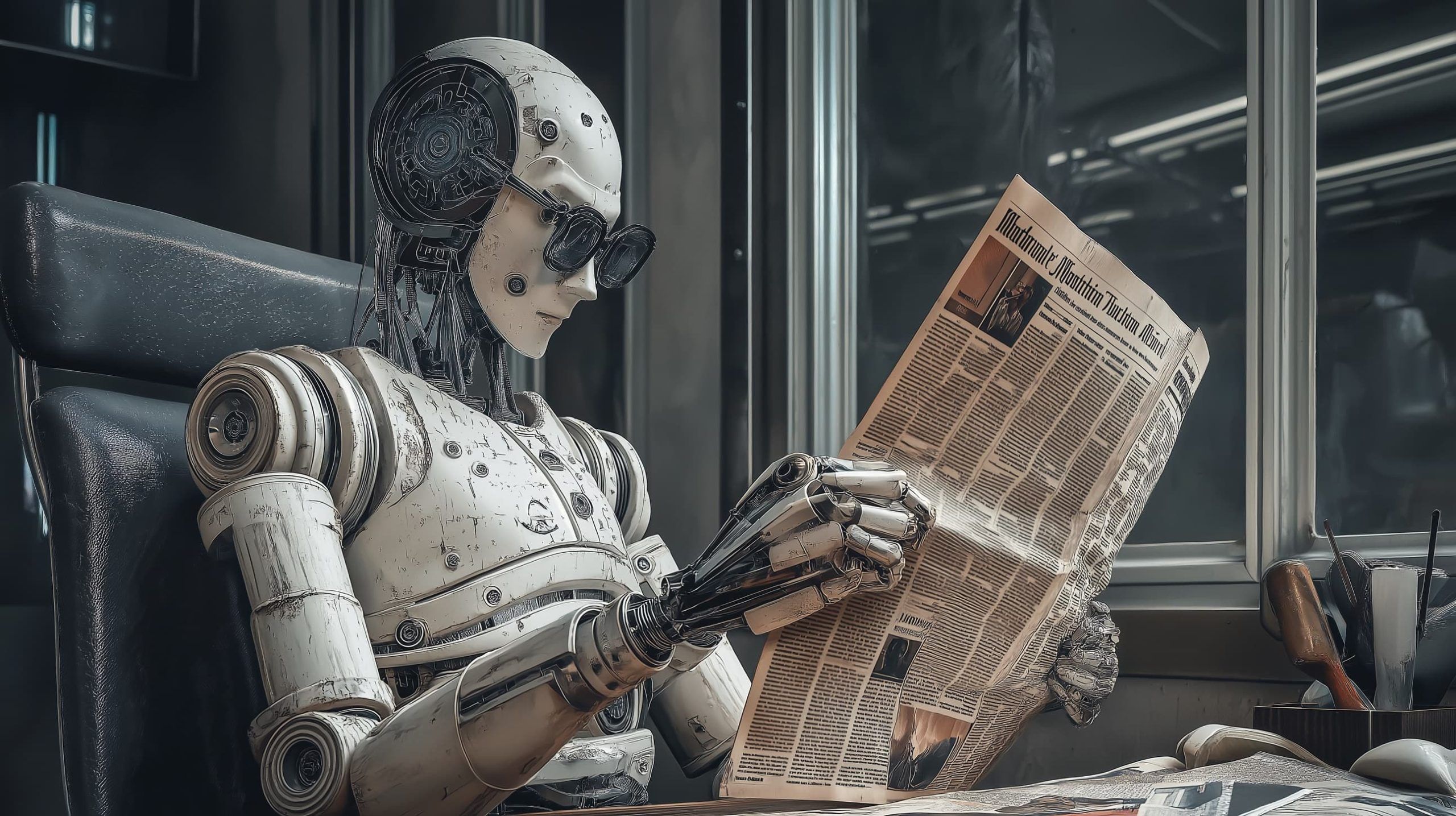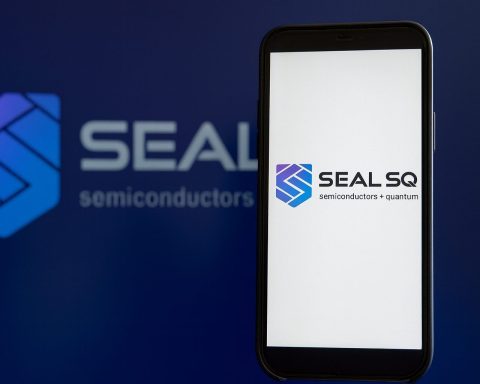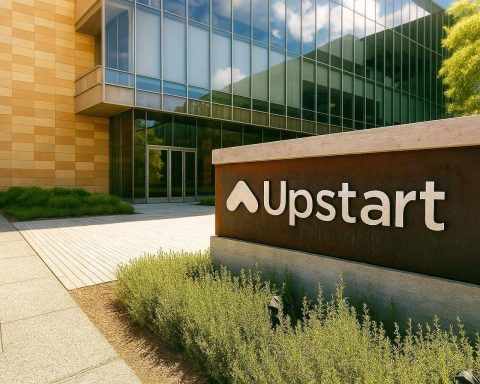Major AI Company Announcements
- OpenAI’s Next-Gen GPT-5: OpenAI is reportedly gearing up to launch its new flagship model GPT-5 as early as this month. The model is expected to incorporate multiple specialized sub-models and tool-use abilities, rather than a single monolithic system [1] [2]. CEO Sam Altman has hinted that GPT-5 will include OpenAI’s experimental “o3” model as part of this strategy to create a more versatile AI capable of handling diverse tasks [3].
- Google DeepMind’s “Gemini 2.5 – Deep Think”: Google DeepMind officially rolled out Gemini 2.5 “Deep Think”, touted as its most advanced reasoning AI model. This multi-agent system tackles questions by spawning multiple AI “agents” in parallel, yielding better answers at the cost of hefty computation [4] [5]. Deep Think became available August 1 to users of Google’s $250/month AI Ultra plan [6]. Notably, an advanced variant of Deep Think achieved a gold-medal score at the International Math Olympiad, solving 5 of 6 problems – a first for AI in that competition [7]. Google is even sharing the slow, “hours-to-reason” IMO-winning model with select researchers to spur multi-agent AI research [8]. “Deep Think can help people tackle problems that require creativity, strategic planning and making improvements step-by-step,” the company said in a blog post [9], underscoring a leap in problem-solving capabilities. Google claims Gemini 2.5 Deep Think significantly outperforms rival models from OpenAI, xAI, and Anthropic on tough coding and knowledge benchmarks [10].
- Amazon’s Push for “Agentic AI”: Amazon Web Services (AWS) announced a new toolkit called Amazon Bedrock AgentCore to help enterprises deploy and manage AI agents at scale in the cloud [11]. Revealed at an AWS Summit in New York, AgentCore (now in preview) provides a serverless runtime with memory and observability for autonomous agents [12]. It also integrates identity/access controls so agents can securely interact with corporate data and APIs [13]. “With agents comes a shift to service as a software. This is a tectonic change in how software is built, deployed and operated,” explained AWS VP Swami Sivasubramanian [14]. AWS’s move highlights how cloud giants (AWS, Microsoft, Google, etc.) are racing to host the next wave of agent-driven AI applications – from coding assistants to customer service bots – as businesses experiment with autonomous AI services [15].
- Other New AI Products: A flurry of smaller launches also hit the market. Enterprise AI firm DataRobot debuted an “Agent Workforce” platform (built with NVIDIA) to let organizations deploy teams of AI agents for complex workflows [16]. In customer experience, analytics company Contentsquare agreed to acquire Loris AI, a startup applying conversational AI to customer support, to infuse more AI-driven insights into service interactions [17]. IT services giant Cognizant rolled out new AI Training Data Services to speed up enterprise model development [18]. And cybersecurity firm Arctic Wolf announced a partnership with Databricks to power its threat-hunting AI with greater data scale [19]. Even Amazon’s consumer devices team made news – Alexa is reportedly being upgraded with a new generative AI model to enable more conversational interactions (though full details weren’t announced by Aug 2) [20]. Across the board, from cloud infrastructure to business software to voice assistants, companies are rapidly infusing cutting-edge AI capabilities into their products.
Business & Investment News
- Meta’s $2B Data Center Play & Big Tech Spending: The AI gold rush shows no sign of slowing on Wall Street or in Silicon Valley. In an Aug. 1 SEC filing, Meta disclosed plans to offload ~$2.04 billion worth of data center assets (land and buildings under construction) as “held-for-sale” – intending to contribute them to a financing partner within a year [21]. This unusual move will bring in outside capital to help co-develop Meta’s next wave of AI supercomputing centers [22]. Meta CFO Susan Li said the company is “exploring ways to work with financial partners to co-develop data centers” to fund its massive AI infrastructure needs [23]. CEO Mark Zuckerberg has made clear the scale of Meta’s AI ambition, telling investors he plans to invest “hundreds of billions of dollars” in AI data centers – envisioning giant super-clusters so large that “just one of these covers a significant part of the footprint of Manhattan,” as he described [24]. Even after seeking outside funding, Meta raised its 2024 capital expenditure forecast by $2 billion (now up to $72 billion) largely due to AI investments [25].
- AI Boosts Earnings – and Capex: Recent earnings from Big Tech underscored that AI is now the engine of growth for these firms. In Q2 reports, Microsoft, Alphabet (Google), Amazon, and Meta all credited AI for boosting demand in areas like cloud services, search, and digital ads [26]. This “upbeat commentary” has spurred even more spending: Microsoft, Google and Amazon are significantly ramping up capital expenditures to alleviate capacity bottlenecks in their AI cloud platforms [27]. Microsoft noted its Azure cloud is still “capacity constrained” for AI and signaled ongoing heavy investment in data centers and GPUs [28]. Google CEO Sundar Pichai likewise said Google is “focused on investing for the long term” in AI after its cloud unit boosted spending by $10 billion to expand GPU capacity [29]. One analyst remarked that as firms like Alphabet and Meta race ahead in AI, capital expenditures are shockingly high and will remain elevated – yet investors have so far welcomed the big spending [30]. Indeed, AI optimism has fueled tech stocks: Microsoft’s and Meta’s share prices are up ~20–30% this year, and chipmaker Nvidia briefly hit a $1 trillion market cap on surging AI chip demand [31].
- Mega-Deal in AI Cybersecurity: The AI era is driving major consolidation in cybersecurity. In one of the largest tech acquisitions of the year, Palo Alto Networks announced it will acquire identity-security firm CyberArk for $25 billion [32]. Palo Alto’s CEO Nikesh Arora said the goal is to build a comprehensive security platform suited for a time of AI-driven cyber threats [33]. With AI-powered attacks on the rise and an “explosion of machine identities” from autonomous systems, companies are seeking to protect credentials and detect sophisticated breaches [34]. CyberArk specializes in managing privileged accounts, complementing Palo Alto’s strengths in network and cloud security. This follows Google Cloud’s $32 billion acquisition of security startup Wiz earlier this year [35], signaling a wave of security M&A as vendors race to offer one-stop AI-secure solutions. Some analysts see logic in these mergers: customers burned by high-profile hacks (like the Chinese breach of dozens of U.S. government email accounts revealed in July) want fewer vendors and more AI-enhanced defenses [36]. “The rise of AI and the explosion of machine identities have made it clear that identity security is critical,” Palo Alto’s Arora noted, explaining the urgency behind the deal [37].
- Venture Capital and Startup Moves: Private AI companies continue to attract hefty investment. For example, Austin-based Anaconda, maker of the popular open-source Python AI platform, raised over $150 million in Series C funding led by Insight Partners (with Abu Dhabi’s Mubadala joining) [38]. The round reportedly values Anaconda at ~$1.5 billion and will help scale its new enterprise AI cloud platform for its 50+ million users [39]. In another sign of the times, data/AI giant Databricks made a strategic bet on open-source AI models – it led a $50 million round in startup MosaicML and shortly after confirmed plans to acquire MosaicML outright [40]. And just this week, global consultancy Globant announced a partnership with OpenAI to integrate GPT-4 (and the upcoming GPT-5) into enterprise projects in finance, pharma, and other sectors [41]. Globant says it will help clients “reimagine” business processes with OpenAI’s tech [42], a move that mirrors rival consultancies striking similar deals with AI labs (Anthropic, Cohere, etc.). Even early-stage startups are drawing interest: for instance, Echo, a young company building AI-secured DevOps software, just secured a $15 million seed round to develop its “vulnerability-free” AI-driven infrastructure tools [43]. Whether via billion-dollar M&A, big venture rounds, or strategic alliances, the common thread is confidence that AI will transform every sector – and capital is pouring in accordingly [44].
Policy & Regulation Updates
- EU’s AI Act Takes Effect (Aug 2): Europe’s landmark AI regulation is officially underway. Key obligations of the EU AI Act for general-purpose AI (GPAI) providers kicked in on August 2, forcing companies deploying large AI models to meet new requirements on transparency, safety, and copyright compliance [45] [46]. In preparation, the European Commission published a voluntary Code of Practice for GPAI in July, and by August 1 had publicly listed 26 companies that signed on [47] [48]. All major U.S. AI labs – OpenAI, Anthropic, Google, IBM, Microsoft, and even Elon Musk’s xAI (partially) – are on board as early signatories [49]. The most prominent European signers include France’s Mistral AI and Germany’s Aleph Alpha】 [50]. Notably Meta Platforms refused to sign the code, arguing it “goes far beyond the scope of the AI Act” and introduces “legal uncertainties” for developers [51]. EU officials, however, are not blinking. “There is no ‘stop the clock’. There is no grace period. There is no pause,” stressed Commission spokesperson Thomas Regnier, rejecting calls to delay enforcement [52]. Those who declined to join the voluntary code will not get the benefit of presumed compliance once the AI Act is enforced, the Commission warned [53] [54]. In short, Brussels is forging ahead with what may become a global template for AI governance – and bracing for showdowns with any companies that resist. (OpenAI and Anthropic, for their part, voiced support: “If thoughtfully implemented, the EU AI Act and Code will enable Europe to harness the most significant technology of our time,” Anthropic said in a statement [55] [56].)
- United States – No Preemption, New Action Plan: In Washington, a controversial attempt to block local AI regulations just died in the U.S. Senate. A provision in a July defense bill that would have barred U.S. states and cities from regulating AI for 10 years provoked bipartisan backlash and was struck down in a 99–1 Senate vote on July 30 [57]. State officials had decried it as federal overreach, and its removal preserves the ability of states like California or New York to craft their own AI rules [58]. “Thwarting states from acting on AI for a decade was a terrible idea,” one policy advocate said, applauding the Senate’s reversal [59]. Absent a comprehensive federal AI law, the U.S. is left with a patchwork of state initiatives – an outcome tech lobbyists had hoped to prevent. Meanwhile, the White House is advancing its own agenda: in late July it unveiled “America’s AI Action Plan,” a sweeping strategy document outlining 90+ federal initiatives to spur AI innovation, build domestic AI infrastructure, and establish standards for AI safety and ethics [60] [61]. This plan (mandated by a January executive order) calls for measures like expediting new data centers and semiconductor fabs, removing regulatory barriers to AI, and promoting “trustworthy AI” uses in government [62] [63]. “America’s AI Action Plan charts a decisive course to cement U.S. dominance in artificial intelligence… ensuring American workers and families thrive in the AI era,” said OSTP Director Michael Kratsios, emphasizing the urgency to “turbocharge” innovation and infrastructure in order to win the AI race [64]. The Biden (Trump) administration has also secured voluntary AI Safety Pledges from leading AI companies as a stopgap while more formal regulation is debated [65].
- China, UK and Global Moves: Around the world, regulators are scrambling to keep up with AI. China’s new generative AI regulations took effect this month, requiring security reviews and real-name verification for public AI services [66]. Under the rules, Chinese tech giants like Baidu, Alibaba and others have reportedly received licenses to launch ChatGPT-style bots that comply with state content guidelines [67]. In the UK, Prime Minister Rishi Sunak announced Britain will host a Global AI Safety Summit in early November 2025, convening nations and companies to discuss frontier risks such as potential AI use in bioweapons or cyber warfare [68]. Canada and Australia are drafting their own AI laws focusing on transparency and data protection, and the United Nations has empaneled a new high-level advisory body to explore international coordination on AI governance [69]. UN Secretary-General António Guterres even floated the idea of an “International AI Agency” akin to the IAEA for nuclear tech [70]. While these initiatives are nascent, they reflect a growing global consensus: managing AI’s risks – from bias and privacy to misinformation and existential threats – is now a priority on the world’s diplomatic agenda.
Research & Innovation Breakthroughs
- Virtual AI Scientists Design New Vaccine: A groundbreaking Nature study from Stanford demonstrated AI agents autonomously making a biomedical discovery. Researchers created a “virtual lab” of AI scientists (complete with virtual researchers and a principal investigator) and tasked them with devising a better vaccine for the COVID-19 virus. The AI team, given tools to stimulate creative thinking, surprised its human supervisors by proposing an unconventional solution: using nanobodies (small antibody fragments) instead of standard antibodies [71]. “From the beginning of their meetings, the AI scientists decided that nanobodies would be a more promising strategy,” reported study lead Dr. James Zou [72]. Remarkably, when the human researchers synthesized the AI-designed nanobody in the real lab, it proved highly effective, binding to a COVID variant more tightly than existing antibodies [73]. Apart from an initial prompt and budget constraints, the virtual lab ran with minimal human intervention. “I don’t want to tell the AI scientists exactly how they should do their work… I want them to come up with new solutions and ideas that are beyond what I would think about,” Dr. Zou said, highlighting how the AI researchers explored strategies human experts hadn’t considered [74]. This experiment showcases a future where AI “colleagues” generate fresh ideas in medicine – potentially accelerating drug discovery and research, provided proper oversight.
- AI Discovers New Battery Materials: In materials science, AI is helping crack a critical energy challenge. A team at New Jersey Institute of Technology used a dual-AI system to rapidly discover five new porous materials that could revolutionize next-generation multivalent-ion batteries [75] [76]. These batteries (using abundant ions like magnesium or aluminum that carry multiple charges) promise far higher energy storage than lithium-ion cells, but identifying viable materials for them is exceedingly difficult. “One of the biggest hurdles wasn’t a lack of promising battery chemistries – it was the sheer impossibility of testing millions of material combinations,” explained NJIT Professor Dibakar Datta [77]. “We turned to generative AI as a fast, systematic way to sift through that vast landscape and spot the few structures that could truly make multivalent batteries practical,” Datta said [78]. The researchers developed a novel approach coupling a crystal-structure Generative AI (a variational autoencoder) with a large language model to evaluate stability [79]. This AI duo explored thousands of hypothetical crystal structures and pinpointed five entirely new porous metal-oxide frameworks with large open channels ideal for shuttling multivalent ions [80]. Quantum simulations confirmed these AI-designed materials should be synthesizable and highly promising for real batteries [81]. Beyond just improving batteries, the NJIT team emphasized the broader implication: their AI-driven approach is a general method to rapidly discover advanced materials for electronics, clean energy, and more, far faster than traditional trial-and-error [82].
- Other Research Highlights: AI research saw numerous milestones as August began. At the intersection of AI and mathematics, it was officially confirmed that AI systems can now perform at International Mathematical Olympiad gold-medal level, as both Google DeepMind and OpenAI disclosed their models each solved 5 out of 6 difficult IMO problems under competition conditions [83] [84]. (The AIs still fell short of the top human contestants, a handful of whom achieved perfect scores, but it marks a historic leap from a year ago when the best AI got only a silver-level score [85] [86].) In Earth science, Google researchers unveiled an AI model that can analyze trillions of satellite images to create “living maps” of Earth’s changes over time [87] – a potential boon for climate and urbanization research. In biotech, new AI-driven advances in CRISPR gene editing were reported, using machine learning to expand the toolkit of proteins for precise genome edits [88]. And on the cognitive science front, researchers developed a “Centaur” AI (part-human, part-AI approach) trained on 160 psychology experiments to predict human decisions across various tasks, often outperforming traditional human-made theories [89]. Not all news was positive: academic journals revealed an alarming trend of researchers “AI hacking” the peer review process by hiding secret prompts in papers to trick AI-based reviewers into giving favorable reviews – a form of misconduct now being investigated [90] [91]. This illustrates how AI is not only solving scientific problems but also introducing new ethical challenges, requiring vigilance in how we integrate AI into research workflows.
Expert Commentary & Analysis
- Optimism from Tech Leaders & Investors: This week’s developments have many in tech convinced that we’re still in the early innings of the AI boom. Some market analysts believe the economic upside of AI is far larger than currently appreciated. “Investors may still be underestimating the potential for AI to drive durable growth,” observed Dan Morgan, a portfolio manager at Synovus Trust [92], arguing that companies investing aggressively in AI today will dominate their industries tomorrow. Star stock-picker Cathie Wood echoed that sentiment, writing that AI will “increase productivity across every sector” and could add trillions to global GDP. Even longtime tech veterans are exuberant: former Google CEO Eric Schmidt said recent AI breakthroughs “feel like the birth of a new era” – with advances in creative writing and scientific discovery merely “the tip of the iceberg” of what’s coming. Similarly, Stanford AI pioneer Fei-Fei Li noted that AI is “becoming the electricity of the modern economy – an invisible, generalized capability that will transform how we do everything.” She predicted that by 2030, having AI in the loop will be as common as having internet access, and companies not leveraging AI will be as rare as firms today that don’t use computers [93]. The bullish view: AI’s best days (and biggest payoffs) lie ahead, as the technology diffuses into every industry and workflow.
- AI Pioneers Urge Caution: On the other end of the spectrum, many AI insiders are voicing deep concerns about the speed of progress and lack of oversight. In a candid podcast interview made public July 28, OpenAI CEO Sam Altman admitted that testing the (as-yet-unreleased) GPT-5 model “left [him] scared.” “It feels very fast… I had moments thinking, ‘What have we done?’ – like the Manhattan Project,” Altman recounted, drawing an analogy to the creation of the atomic bomb [94]. He warned that AI systems are gaining capability “without sufficient oversight or regulation,” lamenting that “there are no adults in the room” as labs race ahead [95]. This frank admission from the head of the world’s leading AI lab sent ripples through the industry. Other luminaries share his unease. Yoshua Bengio – Turing Award winner often dubbed a “godfather of AI” – said on a panel this week that he supports a global moratorium on training the most extreme large models until robust safety measures are in place, because “we don’t yet know how to make them controllable” [96]. Likewise, Elon Musk, who recently launched his own AI startup xAI, nevertheless urged the United Nations to establish rules ensuring “AI systems remain firmly under human direction,” endorsing international audits of advanced AI models [97]. Even usually-optimistic voices are more measured: Bill Gates wrote on his blog that AI’s rapid evolution is “both hopeful and unsettling,” calling for a balanced approach that maximizes benefits (e.g. medical and educational gains) while mitigating risks (job disruption, misinformation, etc.). In sum, many of AI’s pioneers are publicly warning that without careful governance, the technology’s unchecked growth could have unintended and even dangerous consequences.
- Mixed Predictions for the Future: Looking ahead, experts remain divided on how fast AI will approach human-level intelligence – and what that means for society. Noted futurist Ray Kurzweil believes we are on track to achieve Artificial General Intelligence (AGI) within this decade, predicting that truly human-level AI will emerge and help solve global problems from climate modeling to curing diseases. In contrast, roboticist Rodney Brooks has been highly skeptical of such timelines, pointing out that despite recent progress, “we still have no AI that truly understands causal reasoning or common sense at a human toddler’s level,” let alone an adult’s [98]. He suggests that talk of near-term AGI is overhyped and that current AI, while powerful, remains brittle outside narrow domains. There is broad agreement, however, that AI will penetrate virtually every industry and profession. Researchers at Georgetown’s CSET noted in an August 1 report that AI will be as ubiquitous and essential as electricity, urging governments to treat AI education and retraining as “a new Sputnik moment” to prepare the workforce for massive changes ahead [99]. On societal impact, debates rage around issues like the effect of AI on jobs and creativity. New data this week showed over 10,000 jobs in the U.S. were cut in July due to AI automation, stirring fresh anxieties in the labor market [100]. Yet optimists argue AI will also create new categories of jobs and augment human workers in positive ways. Bottom line: whether one is bullish or bearish, virtually all commentators agree that AI is the story of our time – a transformative force that presents both unprecedented opportunities and profound challenges. How we navigate the next few months and years of AI development and policy may well shape the course of technology and society for decades to come.
Sources: News and press releases from Aug 1–3, 2025, including Reuters, TechCrunch, ScienceDaily, and official statements [101] [102] [103] [104] [105] [106] [107] [108] [109] [110] [111] [112], as well as academic publications (Nature, Cell Reports Physical Science) and expert interviews. All linked references provide access to the primary source material for each claim.
References
1. www.reuters.com, 2. www.reuters.com, 3. www.reuters.com, 4. ts2.tech, 5. ts2.tech, 6. ts2.tech, 7. techcrunch.com, 8. techcrunch.com, 9. techcrunch.com, 10. techcrunch.com, 11. ts2.tech, 12. ts2.tech, 13. ts2.tech, 14. ts2.tech, 15. ts2.tech, 16. ts2.tech, 17. ts2.tech, 18. ts2.tech, 19. ts2.tech, 20. ts2.tech, 21. ts2.tech, 22. ts2.tech, 23. ts2.tech, 24. ts2.tech, 25. ts2.tech, 26. ts2.tech, 27. ts2.tech, 28. ts2.tech, 29. ts2.tech, 30. ts2.tech, 31. ts2.tech, 32. ts2.tech, 33. ts2.tech, 34. ts2.tech, 35. ts2.tech, 36. ts2.tech, 37. ts2.tech, 38. ts2.tech, 39. ts2.tech, 40. ts2.tech, 41. ts2.tech, 42. ts2.tech, 43. ts2.tech, 44. ts2.tech, 45. www.politico.eu, 46. www.politico.eu, 47. www.politico.eu, 48. www.politico.eu, 49. www.politico.eu, 50. www.politico.eu, 51. ts2.tech, 52. ts2.tech, 53. www.euronews.com, 54. www.euronews.com, 55. www.euronews.com, 56. www.euronews.com, 57. ts2.tech, 58. ts2.tech, 59. ts2.tech, 60. ts2.tech, 61. www.whitehouse.gov, 62. www.whitehouse.gov, 63. www.whitehouse.gov, 64. www.whitehouse.gov, 65. ts2.tech, 66. ts2.tech, 67. ts2.tech, 68. ts2.tech, 69. ts2.tech, 70. ts2.tech, 71. www.reuters.com, 72. www.reuters.com, 73. www.reuters.com, 74. www.reuters.com, 75. sciencedaily.com, 76. sciencedaily.com, 77. sciencedaily.com, 78. sciencedaily.com, 79. sciencedaily.com, 80. sciencedaily.com, 81. sciencedaily.com, 82. sciencedaily.com, 83. ts2.tech, 84. ts2.tech, 85. ts2.tech, 86. ts2.tech, 87. ts2.tech, 88. ts2.tech, 89. ts2.tech, 90. ts2.tech, 91. ts2.tech, 92. ts2.tech, 93. ts2.tech, 94. ts2.tech, 95. ts2.tech, 96. ts2.tech, 97. ts2.tech, 98. ts2.tech, 99. ts2.tech, 100. ts2.tech, 101. www.reuters.com, 102. ts2.tech, 103. techcrunch.com, 104. ts2.tech, 105. ts2.tech, 106. ts2.tech, 107. ts2.tech, 108. ts2.tech, 109. sciencedaily.com, 110. ts2.tech, 111. ts2.tech, 112. ts2.tech










